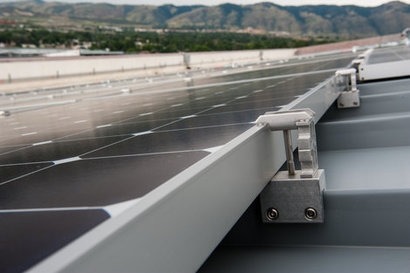
Hydraflow and SolarCity have installed a 1 MW solar power system and 250 kilowatt (500 kilowatt hours) energy storage project at Hydraflow’s headquarters in Fullerton, California. Hydraflow, which designs and manufactures flexible light weight hose assemblies, fluid couplings and quick disconnects for use in engineered aerospace and defense systems, is expected to save more than $3.5 million over the next 30 years by purchasing affordable solar power and energy storage at a discount to utility rates.
“Our original goal was to offset 75 percent of our energy needs, but with the effect of our recently installed LED lighting and solar power system, we hope to realise a net offset of closer to 90 percent of our overall energy needs” said Paul Rodolf, Director of Operations, Hydraflow.
Corporations and large businesses like Hydraflow are subject to peak demand charges, but storage solutions can minimise these charges while providing additional savings by dispatching solar energy when it’s needed most. The project is equipped with DemandLogic, SolarCity’s smart energy storage system for businesses, to store 500 kilowatt hours of solar energy capacity onsite. Hydraflow will not only utilise affordable solar power to lower its costs compared to currently utility rates, but will further reduced energy costs by using stored electricity to minimise peak demand.
Along with solar power, Hydraflow has already modernised its 174,000 square foot facility with approximately 400 LED lighting fixtures and installed a lighting control system to further increase efficiency and reduce peak demand to avoid additional costs. With Hydraflow’s goal of increasing energy efficiency in mind, Hydraflow has advanced its Environmental Management System and Environmental Policy through the use of solar power and energy storage.
The solar power system is expected to prevent more than 18,000 metric tons of greenhouse gas emissions from entering the atmosphere over the next three decades. That’s equivalent to taking more than 3,800 cars off the road for a year or powering more than 3,800 average homes for a year.
For additional information:

